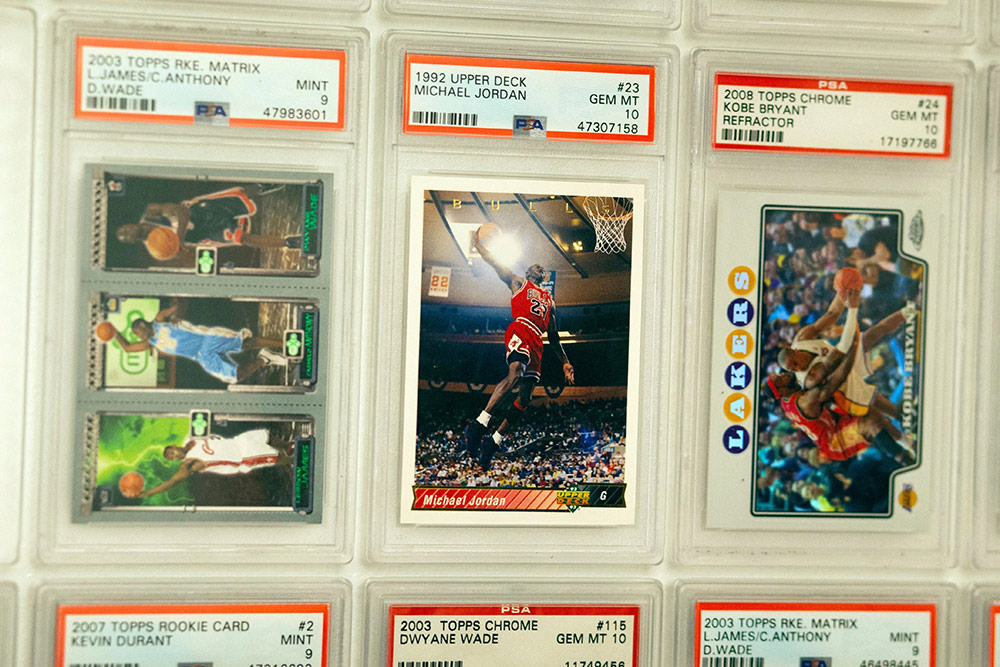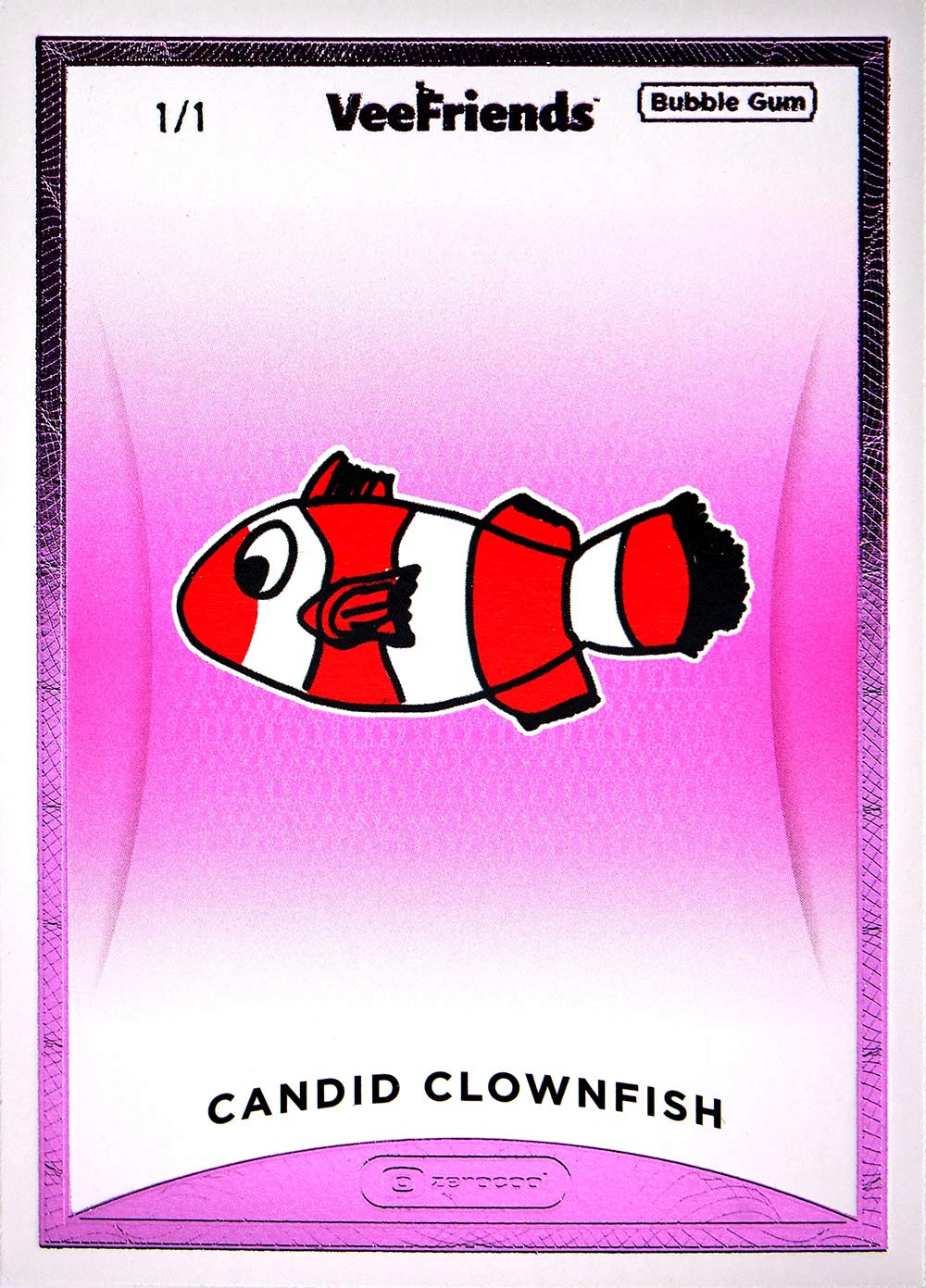如果你的孩子的神奇宝贝和棒球卡实际上并不是在浪费钱,而是价值数千美元的金融资产,那会怎么样?
不久前,交易卡还被认为不过是一种爱好。但在2019年,全球体育交易卡市场价值超过130亿美元。根据全球最大的市场研究商店ResearchAndMarkets.com的一份报告,预计到2027年,全球体育交易卡市场价值将达到980亿美元。
而这还不包括非体育类的交易卡,例如星球大战卡(Star Wars)或龙珠Z卡(Dragon Ball Z)。据eBay称,神奇宝贝(Pokémon)在2021年的销售额增长了500%以上。
交易卡曾经是小学生的消遣活动,如今正在成为重要的投资机会。这就是为什么身价10亿美元的运动鞋市场StockX的创始人乔希·卢贝刚刚推出了一家名为Zerocool的新交易卡公司,该公司打造流行文化偶像交易卡,希望吸引新用户进入该行业。
卢贝认为交易卡就像NFT一样,有巨大的盈利潜力。
卢贝说:“NFT和交易卡之间有很多相似之处,它们都是受供求关系驱动的金融资产,与消费性包装品不同,它们有基于市场的定价,而且作为收藏品和资产,它们还有长期价值。”
 一家总部位于旧金山的投资基金宣布以590万美元的价格购买了金州勇士队(Golden State Warriors)的篮球明星斯蒂芬·库里的一张卡片,创造了新纪录。图片来源:Kena Betancur—AFP/Getty Images
一家总部位于旧金山的投资基金宣布以590万美元的价格购买了金州勇士队(Golden State Warriors)的篮球明星斯蒂芬·库里的一张卡片,创造了新纪录。图片来源:Kena Betancur—AFP/Getty Images泡沫破裂后,又慢慢重新膨胀
当体育交易卡在20世纪80年代后期大受欢迎时,制造商们兴奋不已,市场上充斥着各种卡片。但当eBay在20世纪90年代推出时,消费者很快发现,他们认为稀有的卡片实际上很常见,而且供过于求。
卢贝告诉《财富》杂志,这一现象导致需求锐减,该行业在接下来的20年内崩溃并停滞不前。
新冠肺炎疫情改变了这一切。据美国有线电视新闻网(CNN)报道,当人们居家隔离并试图捡起来被遗忘的旧爱好时,人们重新点燃了对交易卡的热情。
但卢贝认为新冠肺炎疫情带来的影响被夸大了,他表示交易卡在新冠肺炎疫情之前就已经得到关注。
“在2018年年初,我们这一代玩交易卡长大的人已经到了一定年龄,有更多可支配收入,同时交易卡成为标准化资产。”
交易卡的标准化及其重要性
评估和鉴定交易卡的公司已经存在了几十年。
比如,世界领先的卡片评级公司专业运动认证公司(Professional Sports Authenticator)成立于1991年。它根据卡片的状况和包装对卡片的价值进行排名——本质上是将卡片转化为可以转手实现盈利的资产。但在过去的几年里,新公司不断涌现,包括Beckett Grading Services公司和Global Authenticators International公司。
一张卡片的质量由行业设定的标准决定,并且按照1到10的等级进行分级,然后结合卡片的受欢迎程度和稀有度,最终决定它的价值。
卢贝补充说,这种评估物品的方法能够扩展到其他收藏品,例如玩具和电子游戏。
卢贝指着他的1988年的“塞尔达传说”(Legend of Zelda)电子游戏最初版本(该游戏由另一家专门评估电子游戏的认证公司Wata进行评分,评分为7.5)解释道:“就像我无需向你展示就可以向你出售耐克(Nike)的股票一样,我能够将这款塞尔达电子游戏出售给收藏家,而无需向他们展示或解释。这是一种标准化的资产,他们会知道它来自哪里。”
他补充道:“几个月前,一款评分为9.8的密封塞尔达游戏在拍卖会上以近100万美元的价格售出。”
交易卡就像现实生活中的NFT
NFT和交易卡的吸引力不仅因为它们与流行文化相关,还因为它们稀缺。卢贝表示,对人们来说,这是关于拥有很少有人可以拥有的稀有物品。
卢贝说:“交易卡讲述了一个关于时间、地点和人物的故事,而NFT项目也开始做同样的事情,旨在围绕某个主题、人物和群体讲述一个故事。”
就像NFT被区块链验证,然后被转手从而获取巨额利润一样,像专业运动认证公司这样的公司对交易卡进行认证和标准化,使其成为有巨大投资潜力的金融资产。
卢贝举了一个例子,一张全新的迈克尔·乔丹新秀卡在2020年价值约50000美元,这张卡最终在2021年年初以738000美元的价格售出。
这是一年内14倍的收益。
那么,如果公司继续生产交易卡,稀有卡如何保持其价值呢?
Zerocool的业务是打造新交易卡。但它也想创造出属于自己的卡片,从而能够在不充斥市场的情况下创造需求。
卢贝指出:“这就是问题所在。我们如何在不造成供过于求和破坏卡片价值的情况下将市场扩大10倍、扩大50倍?这其实是一个悖论。没有简单的答案。答案是我们必须变得更有创造力。”
Zerocool公司正在从传统的体育项目中转移出来,以世界上最受欢迎的人和品牌为中心打造卡片。

该公司首次发行的限量收藏交易卡套装是基于加里·维纳查克著名的NFT项目VeeFriends设计的。该公司对800套交易卡套装进行了超过22000次投标。
Zerocool公司将一盒VeeFriends卡片以2150美元的价格售出,该盒卡片目前在eBay上的转售价格高达20000美元。(财富中文网)
译者:ZHY
如果你的孩子的神奇宝贝和棒球卡实际上并不是在浪费钱,而是价值数千美元的金融资产,那会怎么样?
不久前,交易卡还被认为不过是一种爱好。但在2019年,全球体育交易卡市场价值超过130亿美元。根据全球最大的市场研究商店ResearchAndMarkets.com的一份报告,预计到2027年,全球体育交易卡市场价值将达到980亿美元。
而这还不包括非体育类的交易卡,例如星球大战卡(Star Wars)或龙珠Z卡(Dragon Ball Z)。据eBay称,神奇宝贝(Pokémon)在2021年的销售额增长了500%以上。
交易卡曾经是小学生的消遣活动,如今正在成为重要的投资机会。这就是为什么身价10亿美元的运动鞋市场StockX的创始人乔希·卢贝刚刚推出了一家名为Zerocool的新交易卡公司,该公司打造流行文化偶像交易卡,希望吸引新用户进入该行业。
卢贝认为交易卡就像NFT一样,有巨大的盈利潜力。
卢贝说:“NFT和交易卡之间有很多相似之处,它们都是受供求关系驱动的金融资产,与消费性包装品不同,它们有基于市场的定价,而且作为收藏品和资产,它们还有长期价值。”
泡沫破裂后,又慢慢重新膨胀
当体育交易卡在20世纪80年代后期大受欢迎时,制造商们兴奋不已,市场上充斥着各种卡片。但当eBay在20世纪90年代推出时,消费者很快发现,他们认为稀有的卡片实际上很常见,而且供过于求。
卢贝告诉《财富》杂志,这一现象导致需求锐减,该行业在接下来的20年内崩溃并停滞不前。
新冠肺炎疫情改变了这一切。据美国有线电视新闻网(CNN)报道,当人们居家隔离并试图捡起来被遗忘的旧爱好时,人们重新点燃了对交易卡的热情。
但卢贝认为新冠肺炎疫情带来的影响被夸大了,他表示交易卡在新冠肺炎疫情之前就已经得到关注。
“在2018年年初,我们这一代玩交易卡长大的人已经到了一定年龄,有更多可支配收入,同时交易卡成为标准化资产。”
交易卡的标准化及其重要性
评估和鉴定交易卡的公司已经存在了几十年。
比如,世界领先的卡片评级公司专业运动认证公司(Professional Sports Authenticator)成立于1991年。它根据卡片的状况和包装对卡片的价值进行排名——本质上是将卡片转化为可以转手实现盈利的资产。但在过去的几年里,新公司不断涌现,包括Beckett Grading Services公司和Global Authenticators International公司。
一张卡片的质量由行业设定的标准决定,并且按照1到10的等级进行分级,然后结合卡片的受欢迎程度和稀有度,最终决定它的价值。
卢贝补充说,这种评估物品的方法能够扩展到其他收藏品,例如玩具和电子游戏。
卢贝指着他的1988年的“塞尔达传说”(Legend of Zelda)电子游戏最初版本(该游戏由另一家专门评估电子游戏的认证公司Wata进行评分,评分为7.5)解释道:“就像我无需向你展示就可以向你出售耐克(Nike)的股票一样,我能够将这款塞尔达电子游戏出售给收藏家,而无需向他们展示或解释。这是一种标准化的资产,他们会知道它来自哪里。”
他补充道:“几个月前,一款评分为9.8的密封塞尔达游戏在拍卖会上以近100万美元的价格售出。”
交易卡就像现实生活中的NFT
NFT和交易卡的吸引力不仅因为它们与流行文化相关,还因为它们稀缺。卢贝表示,对人们来说,这是关于拥有很少有人可以拥有的稀有物品。
卢贝说:“交易卡讲述了一个关于时间、地点和人物的故事,而NFT项目也开始做同样的事情,旨在围绕某个主题、人物和群体讲述一个故事。”
就像NFT被区块链验证,然后被转手从而获取巨额利润一样,像专业运动认证公司这样的公司对交易卡进行认证和标准化,使其成为有巨大投资潜力的金融资产。
卢贝举了一个例子,一张全新的迈克尔·乔丹新秀卡在2020年价值约50000美元,这张卡最终在2021年年初以738000美元的价格售出。
这是一年内14倍的收益。
那么,如果公司继续生产交易卡,稀有卡如何保持其价值呢?
Zerocool的业务是打造新交易卡。但它也想创造出属于自己的卡片,从而能够在不充斥市场的情况下创造需求。
卢贝指出:“这就是问题所在。我们如何在不造成供过于求和破坏卡片价值的情况下将市场扩大10倍、扩大50倍?这其实是一个悖论。没有简单的答案。答案是我们必须变得更有创造力。”
Zerocool公司正在从传统的体育项目中转移出来,以世界上最受欢迎的人和品牌为中心打造卡片。
该公司首次发行的限量收藏交易卡套装是基于加里·维纳查克著名的NFT项目VeeFriends设计的。该公司对800套交易卡套装进行了超过22000次投标。
Zerocool公司将一盒VeeFriends卡片以2150美元的价格售出,该盒卡片目前在eBay上的转售价格高达20000美元。(财富中文网)
译者:ZHY
What if your kid’s pokemon and baseball cards aren’t actually a waste of money, but valuable financial assets worth thousands of dollars?
Not long ago, trading cards were considered little more than a hobby. But in 2019, the global sports trading card market was valued at more than $13 billion. It’s projected to reach $98 billion dollars by 2027, according to a report from ResearchAndMarkets.com, the world’s largest market research store.
And that doesn’t include non-sports trading cards like Star Wars or Dragon Ball Z cards. Pokémon, for example, saw sales increase by more than 500% last year, according to eBay.
What was once a pastime for elementary school kids is now becoming a major investment opportunity. That’s why Josh Luber, founder of billion-dollar sneaker marketplace StockX, just launched a new trading card company called Zerocool, that creates trading cards of pop culture icons in the hopes of attracting new users to the sector.
Luber is betting that trading cards have huge potential for profit, just like NFTs.
“There are a lot of similarities between NFTs and trading cards,” says Luber. “These are financial assets that are supply-and-demand-driven, they have market-based pricing unlike consumer packaged goods, and they have long-term value as a collectible and an asset.”
A bubble that burst and slowly reinflated
When sports trading cards gained huge popularity in the late ‘80s, manufacturers got excited and started flooding the market with more cards. But when eBay launched in the ‘90s, consumers quickly found out that the cards they thought were rare were actually common, and there was an oversupply.
That led to a crash in demand, and the industry imploded and stagnated for the next 20 years, Luber tells Fortune.
The COVID-19 pandemic changed all that. There was a resurgence in trading cards enthusiasm when people were quarantining and trying to reconnect with their old, forgotten hobbies, according to CNN.
But Luber dismisses COVID’s role as overblown, saying trading cards had started gaining traction well before the pandemic.
“At the beginning of 2018, my whole generation who grew up with trading cards was now reaching an age where we have more disposable income combined with trading cards becoming standardized assets.”
The standardization of trading cards and why that’s important
Companies that evaluate and authenticate trading cards have been around for decades.
For example, Professional Sports Authenticator (PSA), the world’s leading card grading company, was established in 1991. It ranks the value of cards based on their condition and packaging—essentially transforming them into assets that can be flipped for profit. But new companies have popped up over the last few years, including Beckett Grading Services and Global Authenticators International.
A card’s quality is determined by industry-set criteria and graded on a scale of 1 to 10, which is then combined with the card’s popularity and rarity, which ultimately determines how much it’s worth.
This method of valuing objects extends to other collectibles like toys and video games, Luber added.
“The same way that I can sell you a share of Nike stock without having to show you, I can sell this Zelda video game to a collector without having to show or explain it to them. It’s a standardized asset and they’ll know where it comes from,” explained Luber, pointing to his original “Legend of Zelda” 1988 video game, graded at 7.5 by another authentication company, Wata, which specializes in valuing video games.
“A sealed Zelda graded at 9.8 just sold for almost a million dollars at auction a couple of months ago,” he added.
Trading cards are like IRL NFTs
The appeal of NFTs and trading cards doesn’t just come from their relevance to popular culture but comes from their scarce nature. For people, it’s about owning something rare that few others have, says Luber.
“Trading cards tell a story of a time and place and people,” he says. “The right NFT projects start to do the same thing, where you tell a story around a certain topic and people and group.”
Just like NFTs are verified by the blockchain and flipped for huge profits, companies like the PSA authenticate and standardize trading cards, making them financial assets with massive investment potential.
Luber gave the example of a mint condition Michael Jordan Rookie card which was worth about $50,000 in 2020 and ended up selling for $738,000 at the beginning of 2021.
That’s a 14x gain in one year.
So, how can rare cards maintain their value if companies continue to produce trading cards?
Zerocool is in the business of creating new trading cards. But it also wants to create cards in a class of their own that create demand without flooding the market.
“That’s the question. How do we 10x the market, 50x the market without creating oversupply and ruining the value of the cards? There’s a big paradox there,” says Luber. “There’s not an easy answer. The answer is we have to become more creative.”
Zerocool is shifting away from traditional sports and creating cards centered around the world’s most popular people and brands.
Their first release was a highly-limited collectible trading card set based on Gary Vaynerchuck’s famous NFT project, VeeFriends. It generated over 22,000 bids on 800 trading card sets.
A box of VeeFriends cards was sold by Zercool for $2,150, and are now reselling for up to $20,000 on eBay.






